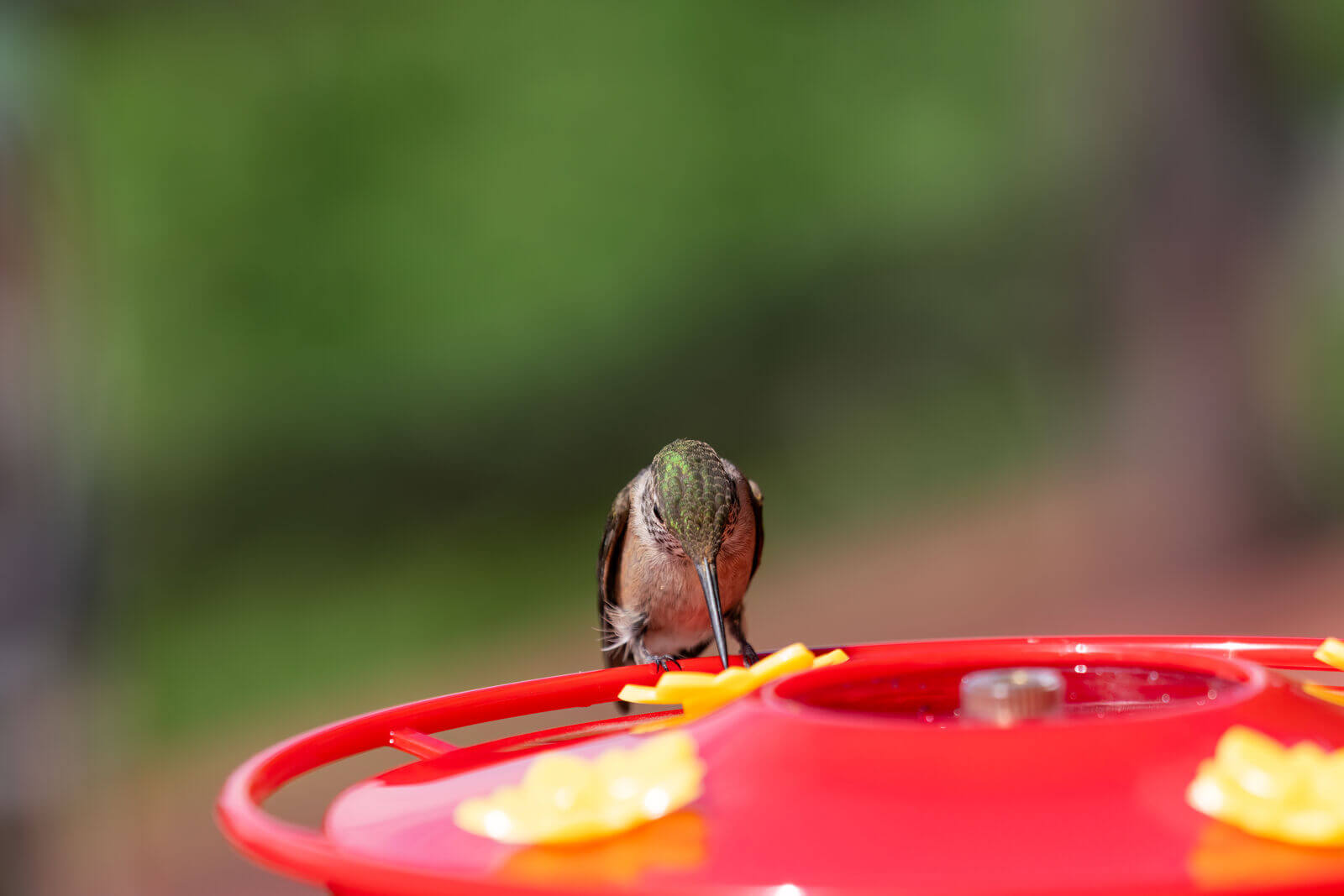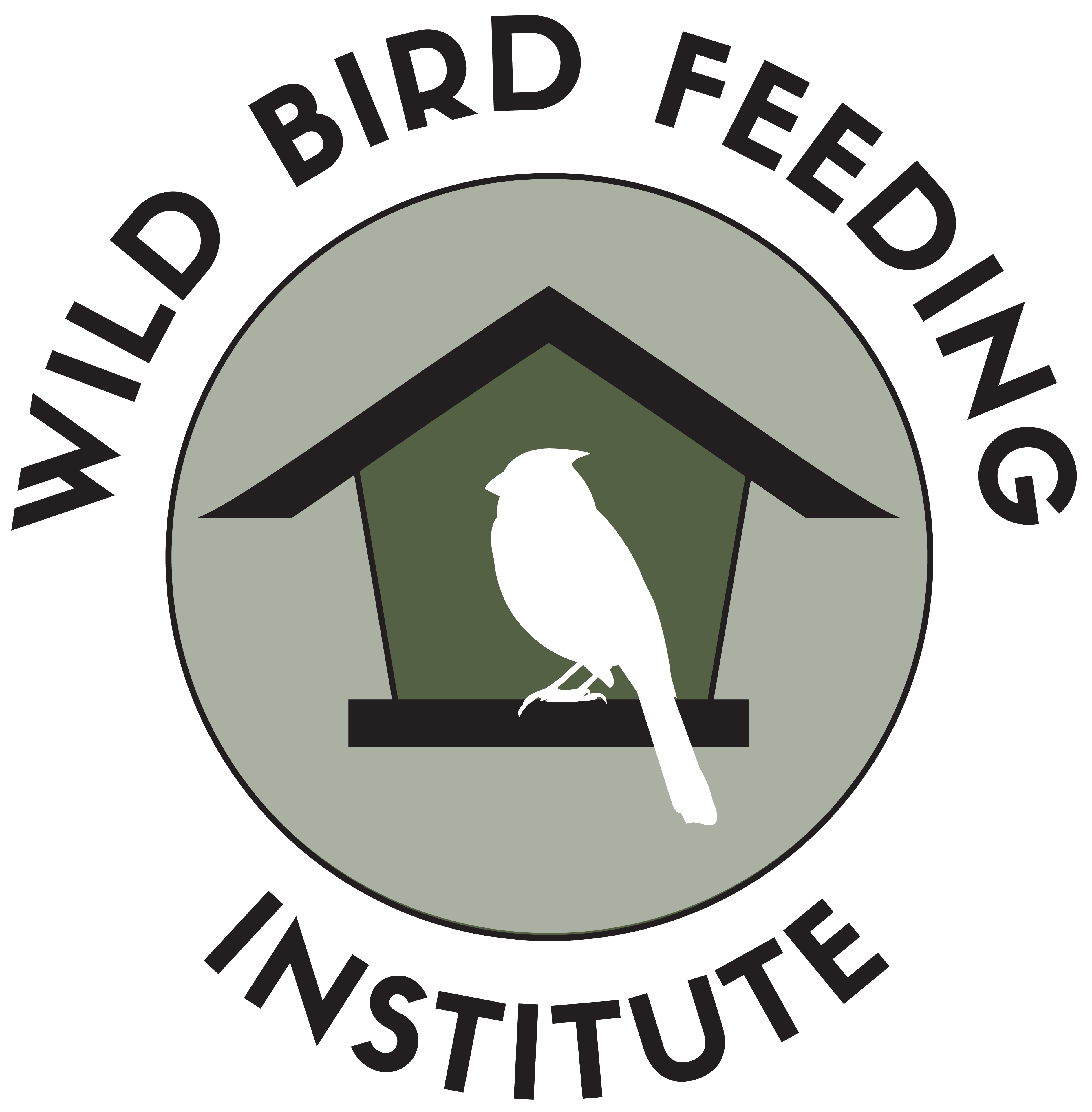
Welcome your smallest guests – Hummingbirds!
Among the Americas’ many native birds live several varieties of hummingbird. Although requiring different feeders and treatment than most other birds, hummingbirds are a great addition to your backyard to increase biodiversity! There are some things you’ll need to know before you start feeding them, though.
- How do you feed them?
Unlike birds that require seed, hummingbirds eat nectar to get their energy. There are several nectar options available that can be found using our Find-a-Retailer tool! Another easy option is to make nectar yourself. All you need is white, granulated sugar and water in a one-part sugar and four-part water solution. After bringing to a boil, let it cool down to room temperature, and then you’re ready to fill your feeder! Dyes, artificial sweeteners, or other products are not necessary to include. Learn more about making nectar here!
- What feeder should you use?
There are several great options for hummingbird feeders that can be purchased. However, it is important to ensure that you are purchasing a feeder dedicated to hummingbird use, as the nectar solution won’t work with other standard seed feeders. Although not necessary, it is best to find a feeder with a moat to catch ants and other insects that may be attracted to the nectar. Finaly, color does matter for hummingbird feeders! Red feeders are most effective as hummingbirds tend to associate red flowers with good quality nectar. If you live in a place with a high number of bees, avoid yellow feeders as they attract a greater number of bees.
- How often should you clean your hummingbird feeder?
These feeders need to be cleaned at least two times per week. Warmer climates require you to clean feeders even more often, up to once per day. Be sure to completely replace the nectar each time you clean your feeder, check for any mold starting to grow, and remove any insects that have been caught in the moat (if it is present).
- Where should you hang your feeder?
There are some things to take into consideration when hanging your feeder. First, be sure it is out of the immediate vicinity of other feeders made for larger birds. These larger birds can scare away the (much smaller) hummingbirds. Also, hang it reasonably high to prevent bears and other wildlife from accessing it (keeping a clean yard prevents wild animal encounters). Hanging the feeder slightly further away from a tree trunk can reduce the number of insects that find their way into the nectar.
- How long should you have your feeder out?
In most places, hummingbirds are present from early spring to late fall. Feeders can be out for this entire season! If temperatures fall below freezing during any night at the ends of the season, ensure that the nectar did not freeze! Some places host hummingbirds year-round! It is absolutely alright (and encouraged) to leave out your feeders for the full time that hummingbirds are present, just be sure to keep them clean!
Now that you know how to properly care for your hummingbird feeders, it’s time to go and get your supplies to welcome a new face and species into your yard this summer!
This map details the hummingbird sightings and timing across North America. It is a great reference to know what species are in your area and when they arrive!
Hummingbird Central provides this key to understand their map:

